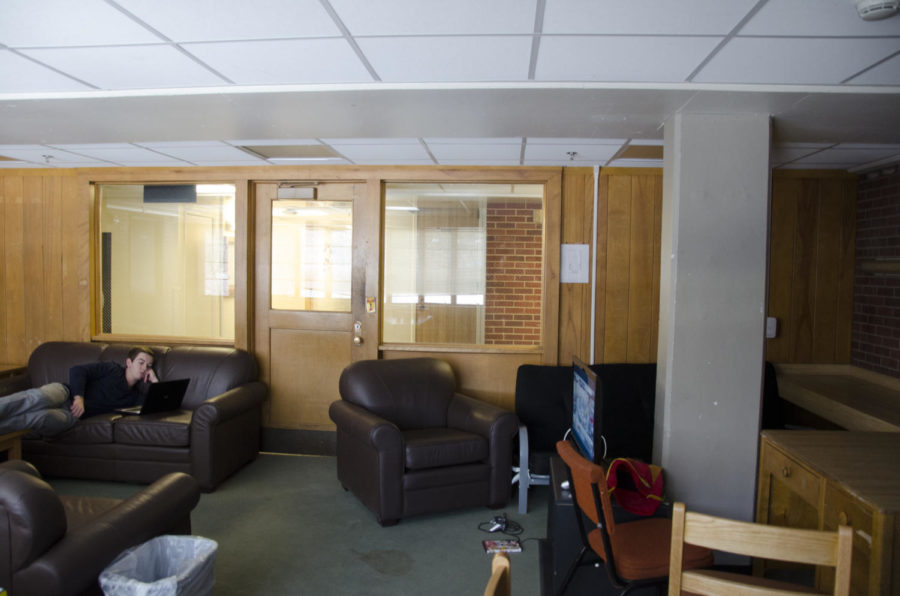Students in dens find new living arrangements for spring semester
Open windows and doors are a welcome sign that some dens no longer have students living in them. This den in Helser Hall is now public, open to residents to use regularly.
January 15, 2015
Imagine taking finals and packing up to potentially move across campus. That’s what students living in residence hall dens had to do this previous fall semester.
“The Inter-Residence Hall Association (IRHA) said ‘please let us have our dens after you have space in your halls for people to spread out and enjoy their den space.’ So, that’s why people have to move,” said Rachel Wagner, associate director for residence life.
There were 436 students living in dens, according to an Inter-Residence Hall Association resolution in November.
Logan West, freshman in agricultural business who lived in a den in Friley Hall during the fall semester, said rooms were available to claim on AccessPlus on Dec. 2.
“It was an incredibly competitive process. I was an hour late to look and everything was basically taken,” he said. “Though I’d assume if you couldn’t find one, they’d let you stay in the dens.”
Alta Byg, a contract coordinator, said if students could not contract a new room, the system would scan for empty rooms and place students automatically.
Wagner said all students were placed in rooms.
West eventually found a spot in a triple room to move into.
Andrew Mettry, a sophomore in chemical engineering who lived in the same den with West, said he was under the impression they would have the whole end of the semester to move, when in reality it was a much shorter time frame.
However, Byg said students were notified when they received their den assignment, they would live there solely for the fall semester.
West said he found moving to be burdensome.
“I didn’t have my parents to help move everything, so it was just my new roommate and I doing it all,” he said.
Wagner said students’ belongings could be left in the dens over break, so they wouldn’t have to lug it home and back to school.
“Some students found this to be a better option because their new rooms were not vacated yet because the previous residents were still taking finals and whatnot,” Wagner said.
Mettry said he found the whole process to be unpleasant.
“I didn’t like it,” he said. “I think if they’re going to put kids in the dens, they should be there the whole year.”
Mettry added that he thought moving just caused a hassle for everyone and that no one uses the dens anyway.
Wagner said the dens serve students in a way their rooms cannot.
“The den is the living room of the house,” she said. “Students want the ease and luxury of having that space to spread out and study. It can be isolating to be in your room for a long amount of time.”
The Inter-Residence Hall Association in November moved to have each hall evaluated by the Department of Residence to see if den usage was the proper way to house the influx of students, according to the association’s meeting minutes.
Wagner said from a community building aspect, students can now have a place to spontaneously run into other students and form new friendships and bonds.
While both men agreed they would miss having the large space for their friends to hang out, they were both happy they will all still be in the same building.
“Moving students in and out of dens causes some angst because the residents form friendships within their houses and then they have to move,” Wagner said.“It can be disruptive, but it’s ultimately better for people to be in a permanent space than in a den.”

















